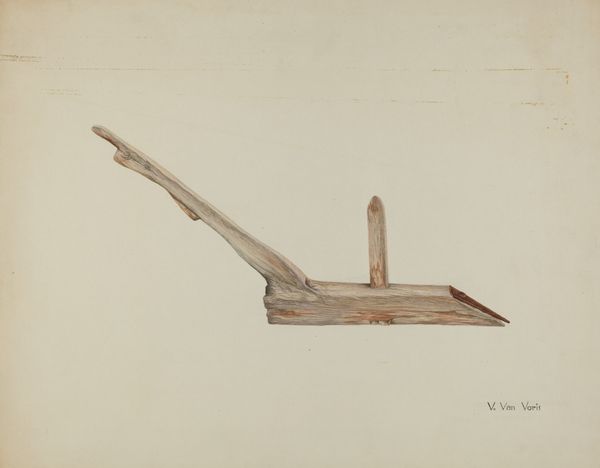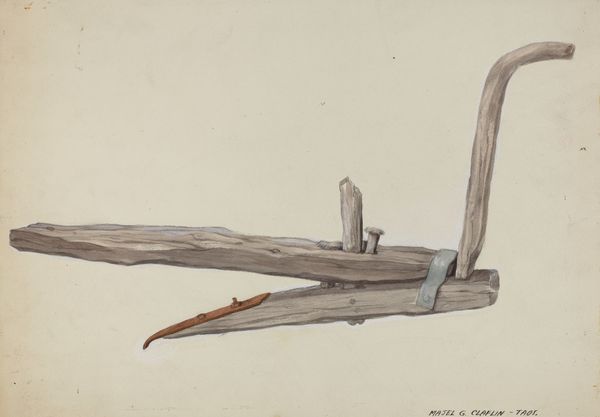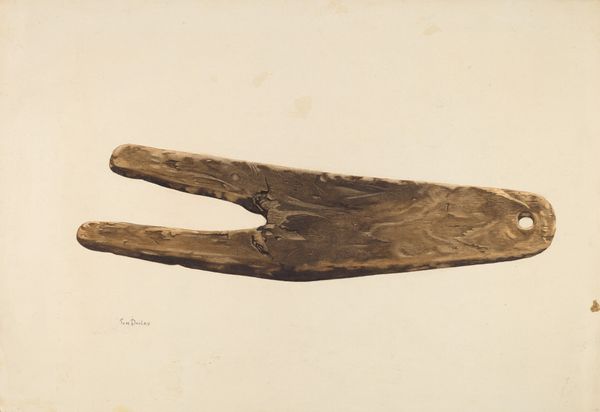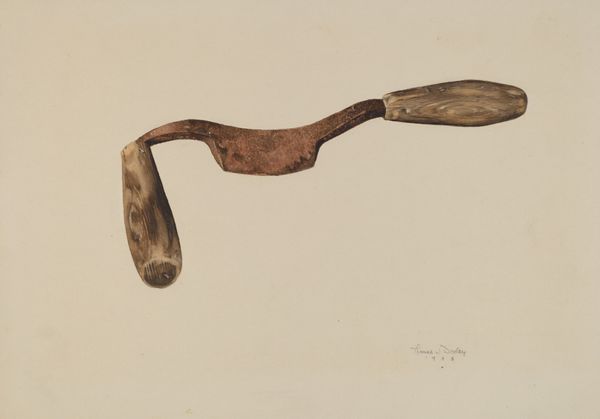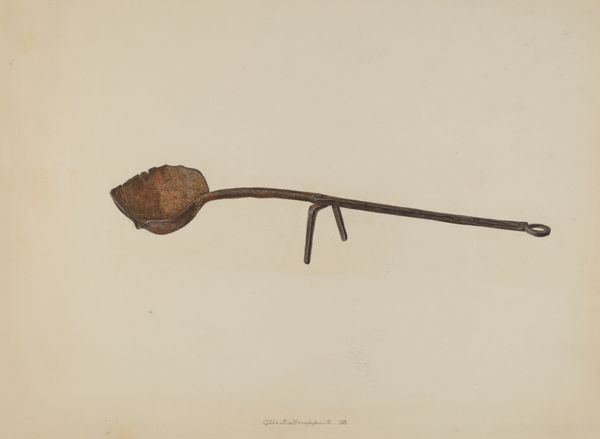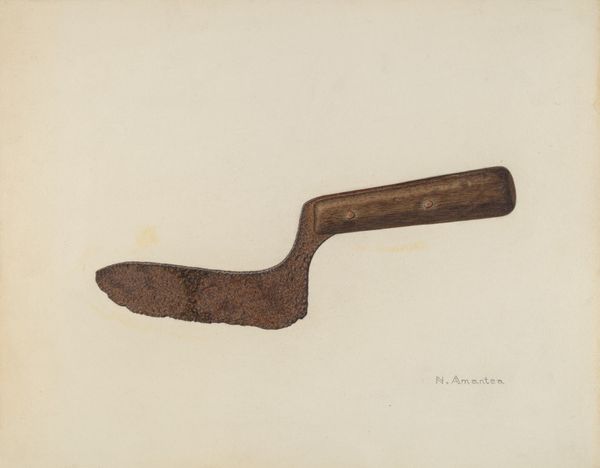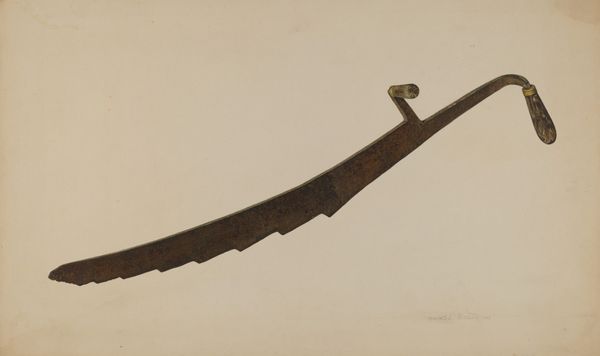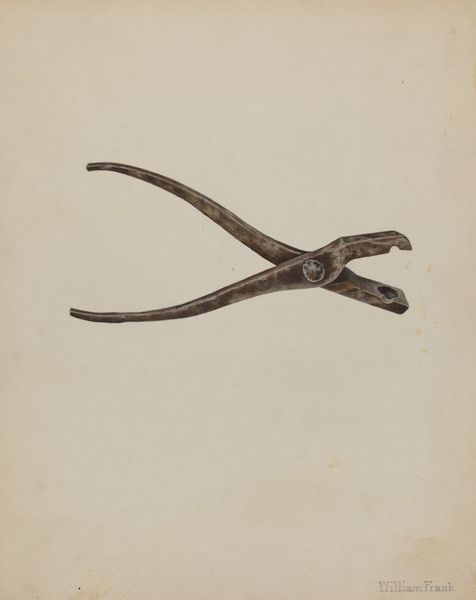
drawing, watercolor
#
drawing
#
watercolor
#
geometric
#
watercolor
#
realism
Dimensions: overall: 24.4 x 35.7 cm (9 5/8 x 14 1/16 in.)
Copyright: National Gallery of Art: CC0 1.0
Curator: What strikes me first is this air of quiet dignity around such a simple farm implement. It’s called "Plow," created around 1941 by Cornelius Christoffels, using watercolor and drawing. It's rendered so lovingly. I almost hear the creak of the wood. Editor: Yes, that reverence is palpable. The subdued palette and delicate rendering amplify its significance, transforming a utilitarian object into something akin to a symbol of hard work and perseverance, wouldn't you agree? Curator: Absolutely! It is like an icon of agrarian life. But it's more than just sentimental. Look at the way Christoffels uses geometric forms, yet the whole thing feels organic and handcrafted. The way the wood is shaded implies so much tactility. Editor: Precisely! That raw materiality evokes layers of cultural meaning—the plow is, in some traditions, a symbol of domesticity, of building a home, or even fertility. There’s a primitive feel that is not at all romantic, however; rather, the reality is that it demands our contemplation. Curator: I like the idea of "contemplation." Maybe it asks us, during uncertain times to return to basic values or remember simpler ways. It could just as well be an observation on obsolescence! Look how much love he puts into it – I'd say he isn't trying to be didactic, but rather memorializing the tool. Editor: I agree – there's a bittersweet nostalgia inherent in portraying such an artifact. What resonates profoundly for me is its depiction as a symbol, transcending its mere functionality. Curator: It seems, despite its humbleness, that this old plow has a tale or two to tell, or at least invite us to reflect on where our sustenance and societies come from. Editor: Indeed – thank you, Christoffels, for that gentle provocation.
Comments
No comments
Be the first to comment and join the conversation on the ultimate creative platform.
